Giant Reed
Information
Arundo donax - Poaceae Family
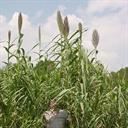
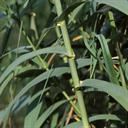
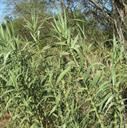
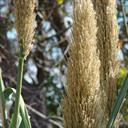
Identification
- Flowers: Flowers are up to 2-foot-tall plumes. They are tan in color and resemble large hand-held fans or feathers.
- Seeds: Seeds are rarely present outside of the plants’ natural range. When they are present, they are usually infertile. It mainly reproduces asexually via an extensive rhizomatous root system.
- Leaves: Leaves are long, flat and grow up to 1.5 ft. (0.5 m) long. They can be green or have variegated green and white stripes the length of the blade.
- Flowering Time: Flowery plumes develop in late summer and persist into early fall.
- Life cycle: Giant Reed begins growing in late spring and continuing throughout the summer. It flowers in late summer and continues through the first fall frost when it dies off.
Impacts
- Giant Reed grows extremely quickly and can easily choke out any native flora in its vicinity.
- It uses a lot of water and chokes river channels, reducing habitat for many native animals.
- Giant Reed’s thick root mats can form around infrastructure such as dams and culverts leading to blockage and damage.
Control
Most effective control methods
- Hand-pulling is effective with new plants, but care must be taken to remove all rhizome material. Stems and roots should be removed to prevent re-rooting.
- Grazing can be effective in the control of Giant Reed. There are currently no traditional biocontrol agents approved for use in the US, although several insect species are currently being researched for the role.
- Systemic herbicides such as Glyphosate (MSSU) can be used to control Giant Reed, although repeated application is needed to achieve complete control.
Large Images
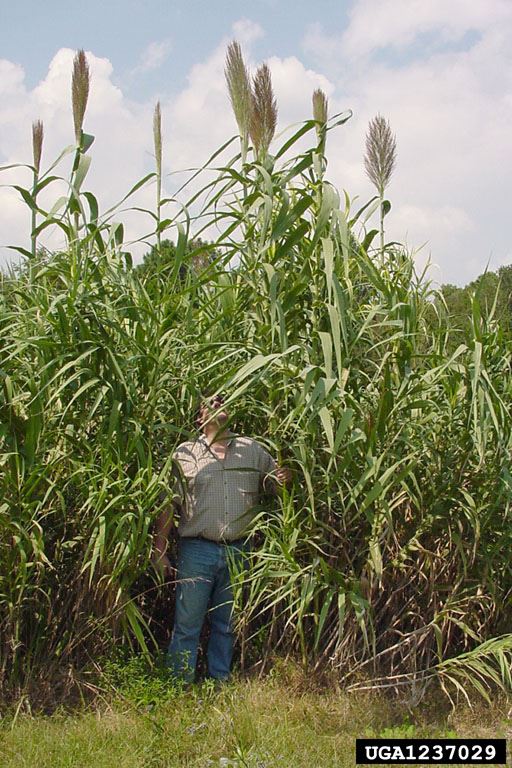
Giant reed: infestation
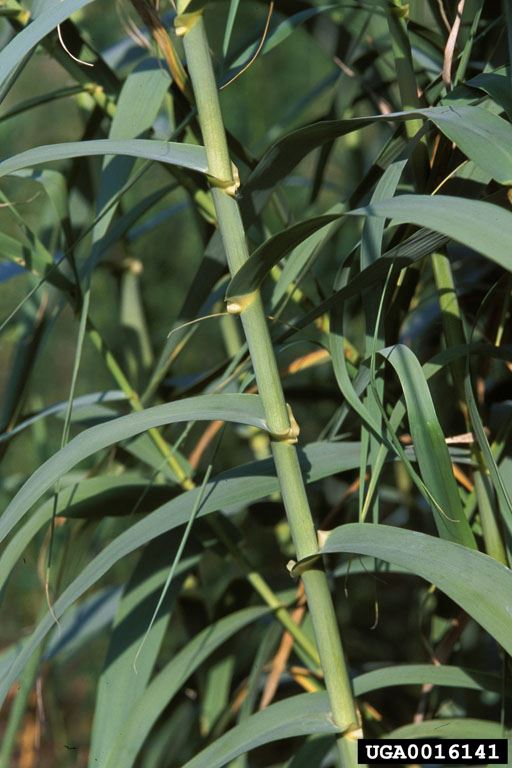
Giant reed: stems and foliage
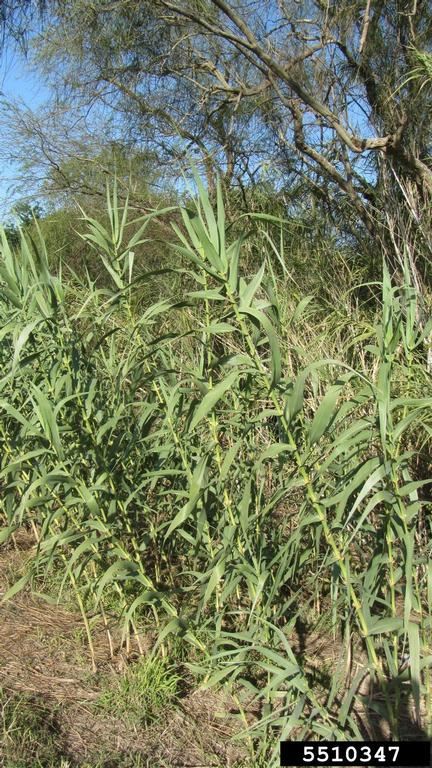
Giant reed
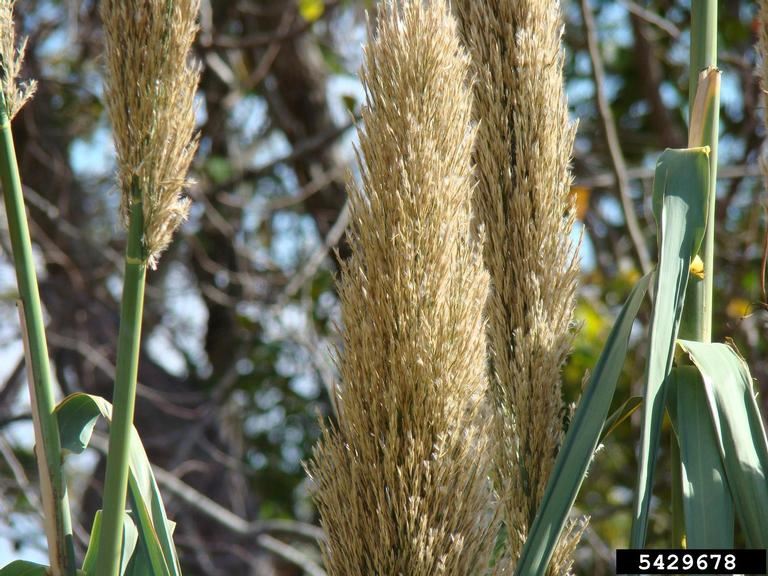
Giant reed: flowers
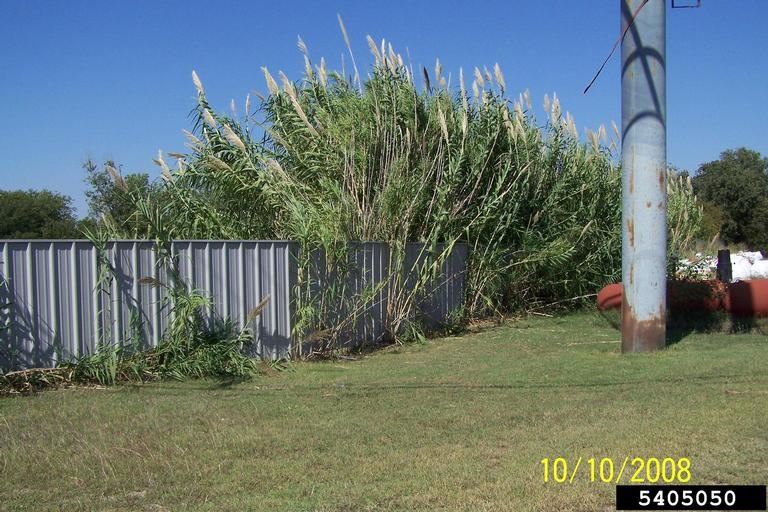
Giant reed: infestation

Giant reed: new shoots growing out of stem fragment
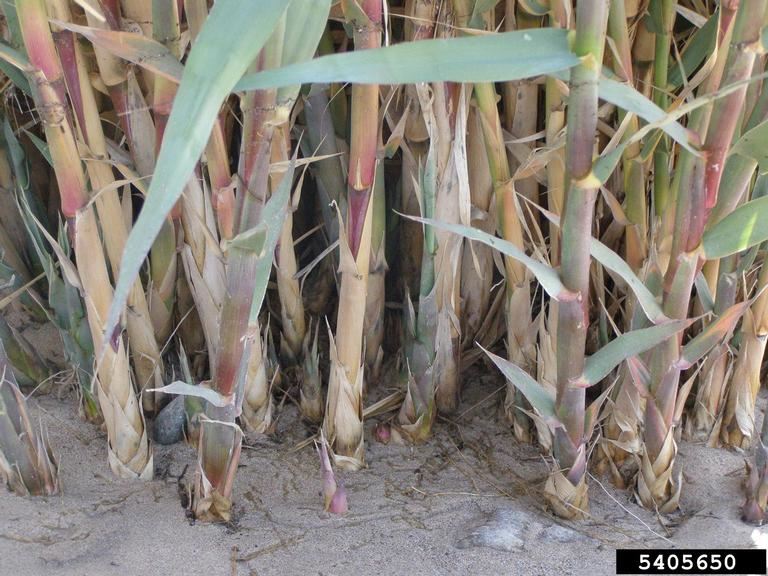
Giant reed: stems
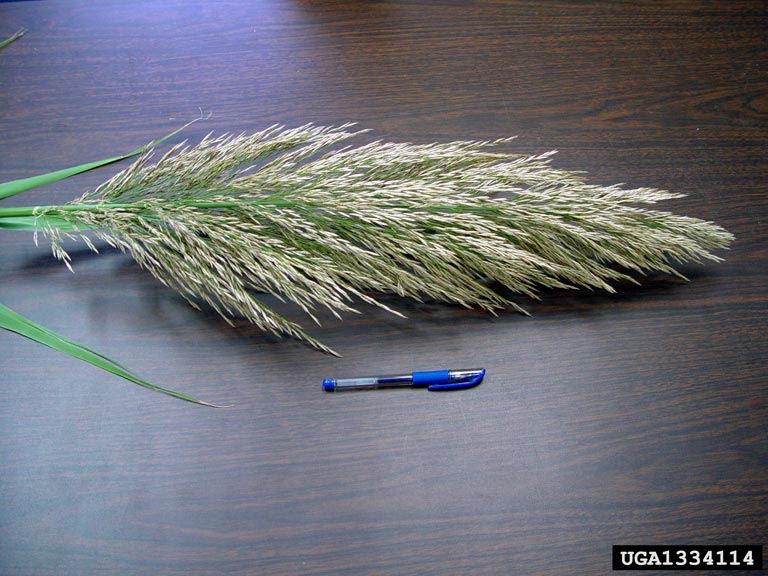
Giant reed: flowers
Resources
-
References
Dudley, T. IPCW plant report: Arundo donax. Retrieved from https://www.cal-ipc.org/resources/library/publications/ipcw/report8/
Invasive Species Compendium. (2018, June 19). Arundo donax (giant reed). Retrieved from https://www.cabi.org/isc/datasheet/1940
Riparian Invasion Research Laboratory. Giant reed. Retrieved from http://rivrlab.msi.ucsb.edu/invasive-species/giant-reed
United States Department of Agriculture. (2014, September). Field guide for managing giant reed in the Southwest [PDF file]. Retrieved from https://www.fs.usda.gov/Internet/FSE_DOCUMENTS/stelprdb5410114.pdf View PDF
McWilliams, J. (2004). Arundo donax. Fire Effects Information System. Retrieved from https://www.fs.fed.us/database/feis/plants/graminoid/arudon/all.html




